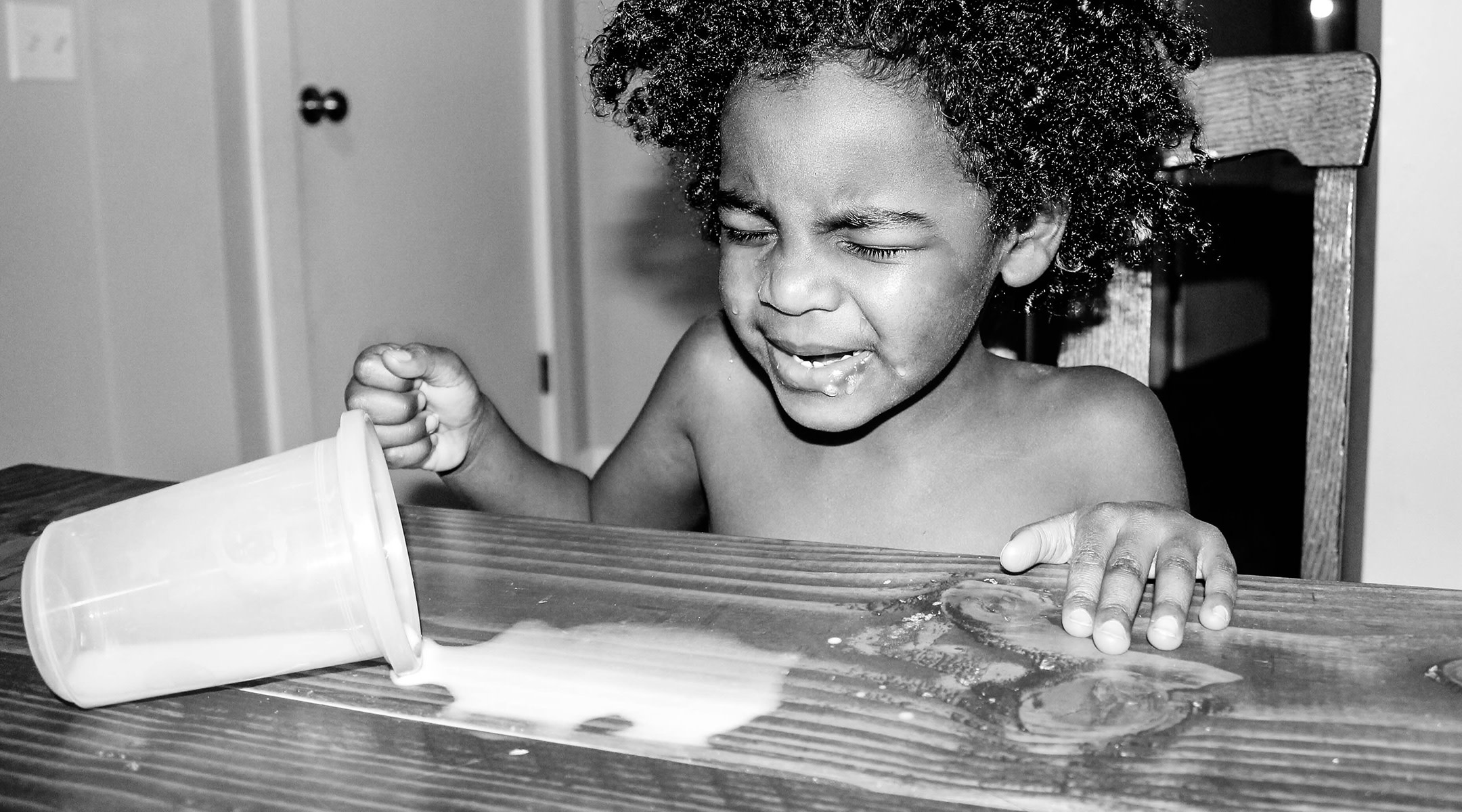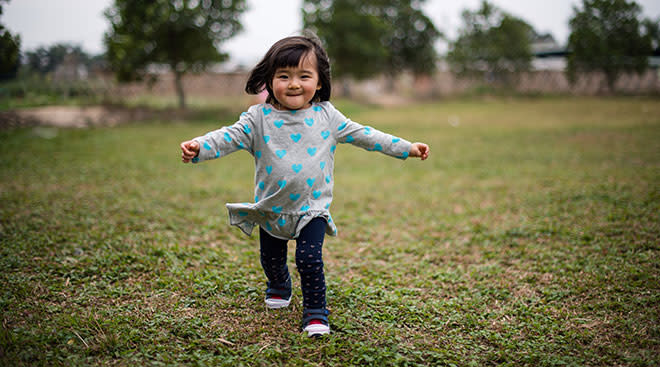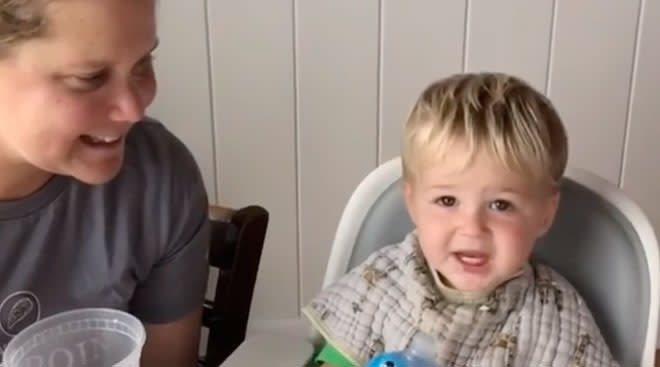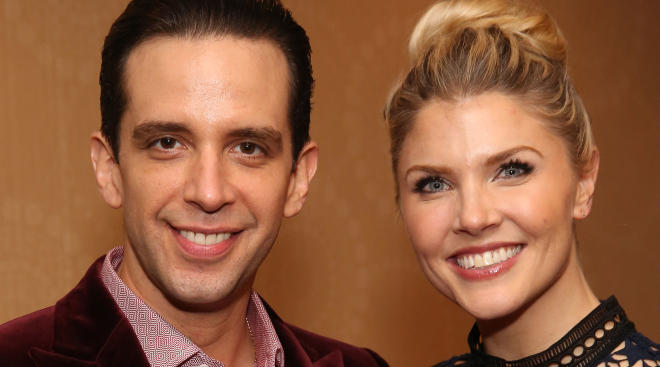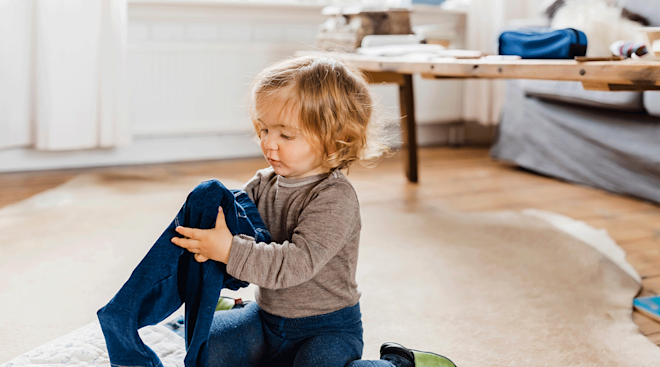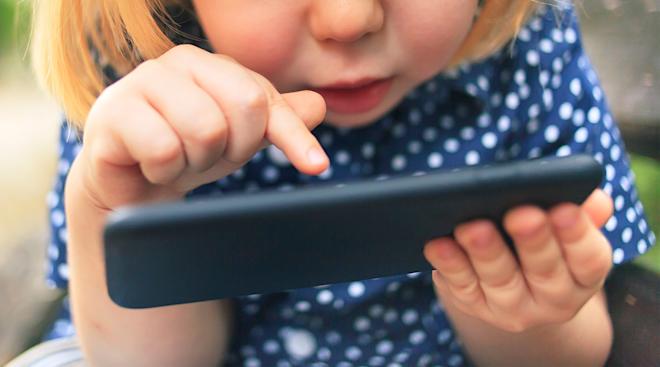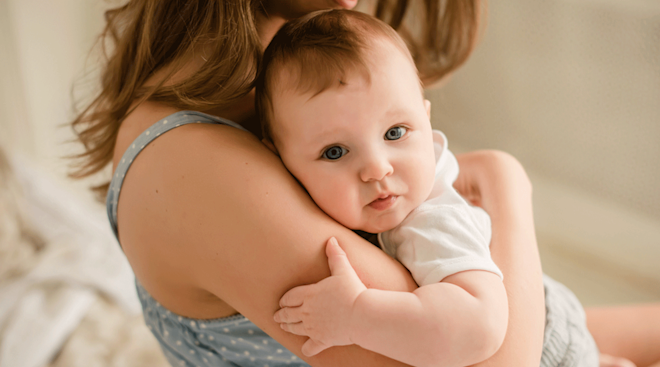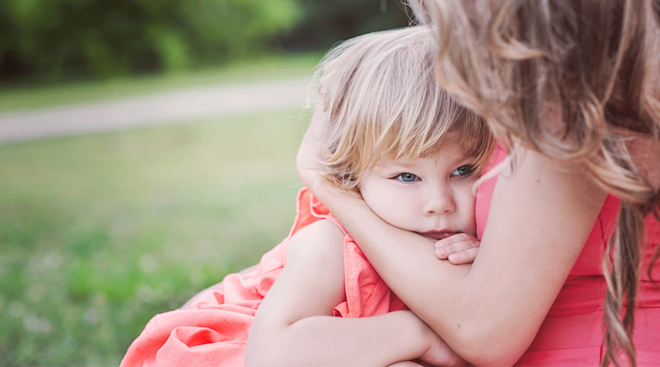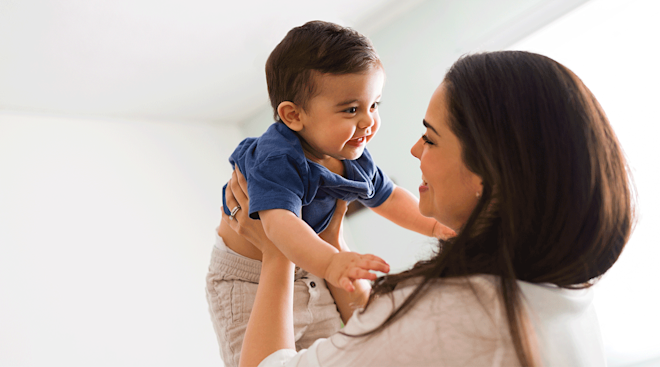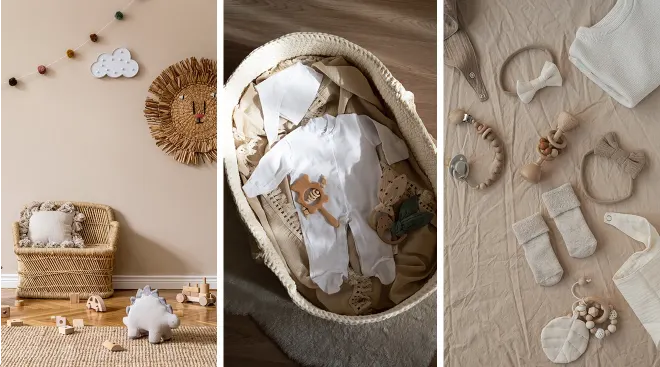How to Deal With the Terrible Twos
Refusing to wear a jacket in below-freezing temperatures. Saying “no” to everything. Throwing themselves face down on the ground. Sound familiar? Regardless of how old your little one is, these signs could be a clue that the so-called “terrible twos” have hit. And even though this phase may not be fun, it’s actually a great thing, experts say. “What a child is doing is testing boundaries, which is his way of figuring out right from wrong,” says Robin Jacobson, clinical assistant professor of pediatrics at Hassenfeld Children’s Hospital at NYU Langone in New York City. “This behavior is a developmental step that helps mold them into the person they’ll become when they grow up,” In other words, it’s a learning experience, and even in the midst of his biggest, loudest, most spectator-attracting temper tantrums, your toddler is looking to you for guidance and support. So while the terrible twos may be every bit as terrible as you imagined, learning what actually sparks this phase and why it’s such a crucial part of growing up will ultimately help you and your child get through these tough moments.
First of all, the name itself may be a misnomer. The terrible twos—characterized by defiant behavior, including saying “no,” hitting, kicking, biting or ignoring rules—can start as early as just after a first birthday or may not set in until a child is 3 years old. But there’s a reason the terrible twos moniker has stuck: Around age 2 is when toddlers usually hit key developmental milestones, including communicating in two- or three-word sentences, walking, climbing and understanding concrete concepts like “mine,” “no” and “bad,” which they didn’t necessarily understand as infants, says Betsy Brown Braun, a child development and behavior specialist and author of You’re Not the Boss of Me. At its root, classic terrible twos behavior is all about testing boundaries, asserting independence and learning how to communicate needs and desires, as well as learning to recognize that those desires may sometimes be different than those of the child’s caregivers.
Ari Brown, MD, a pediatrician based in Austin, Texas, and the co-author of Toddler 411, uses the theory laid out by renowned developmental psychologist Erik Erikson to explain what kids are going through at this age: After 0 to 12 months, which is the trust versus mistrust phase, the toddler phase begins, which is all about exploring autonomy versus self-doubt. “This phase lasts from age one to about 4, which is why parents may see terrible twos behavior at different points in toddlerhood,” she says. “When a child successfully navigates this phase, they gain autonomy and self-worth. That’s good news!”
Although exhausting (likely for both of you), the terrible twos is a normal stage of development and a sign that your toddler has achieved some pretty major developmental milestones. “They’re really smart at this stage,” Jacobson says. “Around age 2 is when they’re getting better at walking, jumping, talking and being understood, and also when they begin to emulate what others are doing. They want to help clean, talk on the phone, wash their hands and follow adult routines. But they still don’t know what’s unsafe, which is why they may test boundaries.” They’re also gauging their independence: Toddlers want to do things on their own, but they also want someone to be close by watching them and may not have the language to communicate their desires. For example, they may want to put on their socks by themselves, but they want you to watch, or they want you to help but only by pulling the fabric over their toes. And if you don’t meet their exact expectations? Hello, tantrums.
While there’s no definitive list of signs that the terrible twos are hitting and every kid is different, these common clues can tip you off to the fact that your child has reached the terrible twos stage—even if they aren’t exactly 2 years old.
- Getting frustrated when their wishes aren’t fully understood. A common cause of those terrible twos temper tantrums is when a toddler gets frustrated that his caregiver can’t read their mind. For example, they may ask for water, only to break down in tears because you gave it to them in a red cup instead of a blue one. Once toddlers can communicate their needs better, the tantrums will start to ebb, Braun says.
- Kicking, biting or hitting. Because toddlers may not have the words to express themselves and are still developing impulse control, they may lash out physically. As frustrating as it is, terrible twos and hitting go hand in hand—but while it’s common, it’s a behavior that needs to be handled consistently in order to put a stop to it, Braun says.
- Tantrums. Crying, wailing or throwing themselves on the floor are common elements of a terrible twos temper tantrum, a hallmark of this developmental phase.
- Saying “no.” Even if the “no” doesn’t make sense in the situation (like when you’re offering a favorite dessert or toy), toddlers tend to overuse this phrase while they’re testing boundaries and learning the power of the word.
- Territorial fighting. At this stage, toddlers are learning the concept of “mine,” experts say. Because of that, they may become very territorial and pick fights with people (and even pets!) who take what’s “theirs,” even when it’s a communal thing like a couch, chair or specific spot on the floor.
While it may seem like the stage will last forever, experts say the terrible twos behavior will ease up once your child is better able to understand rules, communicate what they want and realize that the wrong color cup doesn’t mean the end of the world.
That said, how long the terrible twos lasts depends in part on how you handle the behavior. “Children need to learn consistency, which means that everyone, including caregivers, are on the same page,” Jacobson says. Developing a strategy to deal with meltdowns, hitting or temper tantrums can ensure that the behavior will pass quickly. And the right strategy may be different for different kids. How to deal with the terrible twos depends on your child’s unique personality, as well as your approach to discipline. But there are tips experts agree tend to work best to put a stop to those terrible twos temper tantrums and help your child learn what’s acceptable behavior.
First off, take a deep breath. While dealing with the terrible twos isn’t easy, coming up with a strategy and sticking to it can stave off meltdowns and other trying behaviors. More importantly, remember that your child’s challenging behavior is developmentally appropriate. They’re learning, growing and figuring out the world around them. Read on to figure out how to plan your approach to terrible twos discipline.
How to handle temper tantrums
What are some tactics you can use to handle a tantrum? Say, for example, you’re at a restaurant when your toddler throws a tantrum over the type of crayon they want. What’s the best move? First, don’t tell your toddler they’re “bad,” Braun says. Instead, try acknowledging and narrating how they’re feeling (“You sound really frustrated. You really wanted a blue crayon, right?”). It can help them find the words to communicate their frustration. Taking your toddler out of the situation and going for a walk, looking at a picture on the wall or giving them a toy from your purse can all help shift their attention from their initial anger. Remember, you’re teaching them how to appropriately communicate and grapple with frustration, Braun says. By helping them voice their anger and find a way to shift their feelings, you’re setting them up for success.
At the end of the day, remind yourself what pretty much every parent who’s had a toddler knows: Tantrums are normal. “I always remain calm and remind myself that it’s a lot less embarrassing at age 2 than it would be at 10,” says Jackie, a mom to a newborn and a 3 year old.
How to prevent temper tantrums
Here’s the good news: Experts and parents agree that it’s possible to anticipate trigger points for your child and nip tantrums in the bud. “What I’ve found really helpful is limiting choice,” says Yvonne, a mom to a 2 year old. “I’ll ask my daughter, ‘Do you want to wear your pink Crocs or purple jellies?’ That way she has a choice but isn’t overwhelmed.”
Giving your toddler a sense of what’s about to happen—and what’s to come—is another smart move. “Toddlers don’t know the timeline and have plans of their own, so you can help them anticipate next steps,” Braun says. “Instead of saying, ‘We’re leaving now,’ give a four-step warning.” Say you’re at the park. Instead of rushing your child out when it’s time to go, anticipate your exit 10 minutes in advance, and give them fair warning. Five minutes in, remind them that you’re leaving really soon. Two minutes in: “Two more slides and then we’re done.” Finally, tell your toddler, “This is your last slide before we go. Do you want me to slide with you or do you want to do it by yourself?” At the end, scoop them up, Braun says. They may still protest, but the more you do this, the more they’ll get a sense of the routine.
Finally, Braun says a good approach to preventing tantrums is to anticipate your toddler’s emotional state and avoid overwhelming them with activities and choice, especially if they’ve had a busy day. If you’re tired and hungry, you may feel a little snappish. The same is true for a toddler, Braun says. So if you’ve already had a full day, maybe it’s not the ideal time to add a stop to the grocery store. If your child seems hot and exhausted, dinner with friends may not be the best idea. By planning in advance, you can stave off tantrums before they start.
Best approaches to coping with the terrible twos
Above all, terrible twos discipline should be handled calmly—which means no yelling on your part, Braun says. Fun fact: “Discipline” is rooted in the Latin word “disciplina,” which means instruction. “Think of these moments as a teaching opportunity. You can’t teach by scaring or intimidating your child,” Braun says. “You have to be calm, rational and not take things personally. You’re the adult in charge, and your toddler is looking to you.” To keep from getting upset and escalating the situation, she advises having a few strategies up your sleeve before your child starts acting up. Once you devise a discipline plan, you’ll be better equipped to handle terrible twos behavior without your emotions getting in the way.
Another piece of terrible twos advice: Instead of getting flustered by every behavior, focus on a handful of specific things you want to work on with your child, like enforcing the no-hitting rule, and direct your energies there, Jacobson says. And when it comes to addressing terrible twos behavior, experts agree consistency is key. Whatever method you’ve decided on should be implemented by all the caregivers in your child’s life.
Not sure what measures are appropriate for common terrible twos behavior? Here, our experts and moms weigh in:
- Acknowledge their feelings. If a toddler is throwing a tantrum because you’re leaving the park, mimic their emotions, Braun says. “Don’t mock them, but say, ‘I know you’re mad about leaving the park. I am too! But we have to go home.’” Not only are you helping them put words to the big emotions they’re feeling, but you’re also showing them it’s okay to feel a range of emotions.
- A firm no. This one is key for behaviors that must be stopped immediately, like biting or hitting, Braun says. “I suggest what I call ‘the shock-and-awe’ treatment. It’s not meant to scare your child, but for them to realize that this is serious.” Here’s what Braun recommends: As soon as your child bites or hits (or seems like they’re about to), get down on their level, hold their arms gently to their sides so they can’t lash out, get close to their face and say, “No. We don’t hit people.” “Don’t get caught up in the whys of not hitting people, because a toddler has a short attention span,” Braun says. Just stick to the message and be consistent. “If a toddler is about to bite, I may even put my finger gently to their lips to emphasize the point.”
- Timeouts. Timeouts can be an effective tool: They give both you and your toddler time to calm down, and they also send a clear message that the specific behavior isn’t allowed. So how do you institute timeouts? “Parents or caregivers should pick a safe area as the timeout area and have the child sit still for a minute per year of age,” Jacobson says. Some places that aren’t good for timeouts? In the crib or stroller, since you don’t want those spots associated with discipline. Keep in mind that timeouts aren’t the right approach for everyone. (You could also consider a calm-down corner to potentially thwart the beginning of a tantrum.)
- Take away privileges. Taking away your child’s toys or treats for a set period of time can also be a powerful way to communicate that a behavior isn’t condoned. Let’s say your toddler throws their snack on the floor. Instead of getting angry, simply say, “Okay, I see you’re done with snacks,” then move on with your day. “The key is consistency.
- Distract. Instead of trying to talk your child down from a temper tantrum, sometimes the best course of action is simply to shift the focus to something else. Stacy, a mom of a 2-year-old, finds coming up with games on the fly works best when her son breaks down and refuses to put on a diaper. “It’s exhausting, but I’ll use funny voices and put a diaper on his stuffed animal,” she says. “Then I’ll ask him to help. He loves helping, so he’ll calm down and forget about his anger.”
- Change a “no” to a “yes.” Imagine your toddler is throwing blocks. Instead of saying “don’t throw blocks,” Braun advocates changing the focus to what they can do. Saying something like, ‘I see you want to throw. Should we go outside and throw a ball?’ positively shifts their behavior while teaching what is and isn’t acceptable behavior.
- Use positive reinforcement. If a toddler is always pulling your cat’s tail, comment on how well they’re doing when they play gently and nicely to reinforce the good behavior. This can discourage the less desirable behavior.
Even with your best intentions, you might get caught up in the emotions of a tantrum. “If you do yell or lose your temper—it happens. You can’t beat yourself up,” Braun says. But if you feel like you’re struggling or feel like your toddler is constantly careening from tantrum to tantrum, it may be time to enlist some outside support. “Parents think they should only loop in their pediatrician for medical issues, but we’re also trained in child development and behavior issues,” Brown says. Don’t be afraid to ask for some terrible twos advice. And at the end of the day, remember: The terrible twos is a normal, essential phase of your child’s development.
Please note: The Bump and the materials and information it contains are not intended to, and do not constitute, medical or other health advice or diagnosis and should not be used as such. You should always consult with a qualified physician or health professional about your specific circumstances.
Betsy Brown Braun is a child development and behavior specialist and author of You’re Not the Boss of Me.
Ari Brown, MD, is a pediatrician based in Austin, Texas, and the co-author of Toddler 411. She earned her medical degree from Baylor College of Medicine in Houston.
Robin Jacobson is a clinical assistant professor of pediatrics at Hassenfeld Children’s Hospital at NYU Langone in New York City. She earned her medical degree from Tufts University in Massachusetts.
Learn how we ensure the accuracy of our content through our editorial and medical review process.
Navigate forward to interact with the calendar and select a date. Press the question mark key to get the keyboard shortcuts for changing dates.
































